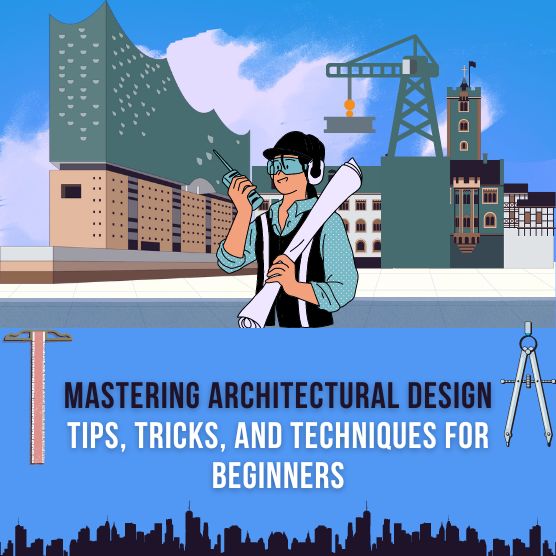
Architecture is more than buildings; it's about creating spaces that inspire, and evoke emotions. For beginners embarking on their architectural journey, the vastness of this field can be both exciting and overwhelming. Yet, with the right guidance and mindset, mastering architectural design is an achievable feat. In this blog, we'll delve into some essential tips, tricks, and techniques to help beginners navigate the world of architectural design.
The foundation of every great architectural design is inspiration. Look around you—observe buildings, nature, art, and everyday objects. Pay attention to how light interacts with surfaces, how spaces are structured, and how people navigate through environments. Keep a sketchbook or a digital journal to capture your thoughts, sketches, and inspirations. Visit architectural sites, museums, and exhibitions to broaden your perspective and fuel your creativity.
Before diving into complex designs, it's crucial to grasp the fundamental principles of architecture. Learn about scale, proportion, balance, rhythm, and harmony. Understand architectural styles, historical contexts, and cultural influences. Familiarize yourself with architectural drawing techniques, including plan, elevation, section, and perspective drawings. A strong understanding of these basics will provide a solid framework for your design endeavors.
In today's digital age, technology plays a significant role in architectural design. Familiarize yourself with architectural software such as AutoCAD, SketchUp, and Adobe Creative Suite. These tools can streamline the design process, and enable you to visualize your ideas in three dimensions. Additionally, explores emerging technologies such as parametric design and virtual reality, which offer new avenues for creativity and innovation.
Study the works of renowned architects and analyze what makes their designs successful. Look for patterns, strategies, and innovative solutions. Pay attention to how they integrate form and function, respond to site constraints, and create meaningful experiences. By deconstructing existing designs, you'll gain valuable insights into the thought processes and techniques employed by seasoned professionals.
Architectural design is an iterative process—don't be afraid to experiment, iterate, and refine your ideas. Start with rough sketches and conceptual models to explore different design possibilities. Solicit feedback from peers, mentors, and instructors to gain diverse perspectives and identify areas for improvement. As you progress, refine your designs through detailed drawings, physical models, and digital renderings. Remember, each iteration brings you closer to realizing your vision.
Incorporate principles of sustainability into your designs from the outset. Explore passive design strategies to maximize energy efficiency, such as orientation, natural ventilation, and daylighting. Integrate green technologies and materials that reduce environmental impact and promote occupant well-being. By prioritizing sustainability, you not only contribute to a healthier planet but also enhance the quality.
Architecture is collaborative—learn to work with clients, engineers, contractors, and other stakeholders. Cultivate strong communication skills to convey your ideas and listen to feedback. Embrace interdisciplinary collaboration to leverage diverse expertise and perspectives. By fostering a collaborative spirit, you'll enrich the design process.
Finally, never stop learning and exploring. Architecture is a dynamic field that evolves with technological advancements, societal changes, and cultural shifts. Stay curious, attend workshops, conferences, and lectures, and engage in ongoing professional development. Be persistent in the face of challenges and setbacks, recognizing that every obstacle is an opportunity for growth. With dedication and passion, you'll master the art of architectural design and leave your mark on the built environment.
In conclusion, mastering architectural design is a journey that requires dedication, & continuous learning. By understanding the fundamentals, embracing technology, studying successful designs, practicing, and staying curious and persistent, beginners can chart a course toward architectural excellence. So, roll up your sleeves, and embark on the exhilarating adventure of architectural design. The possibilities are limitless—let your imagination soar.